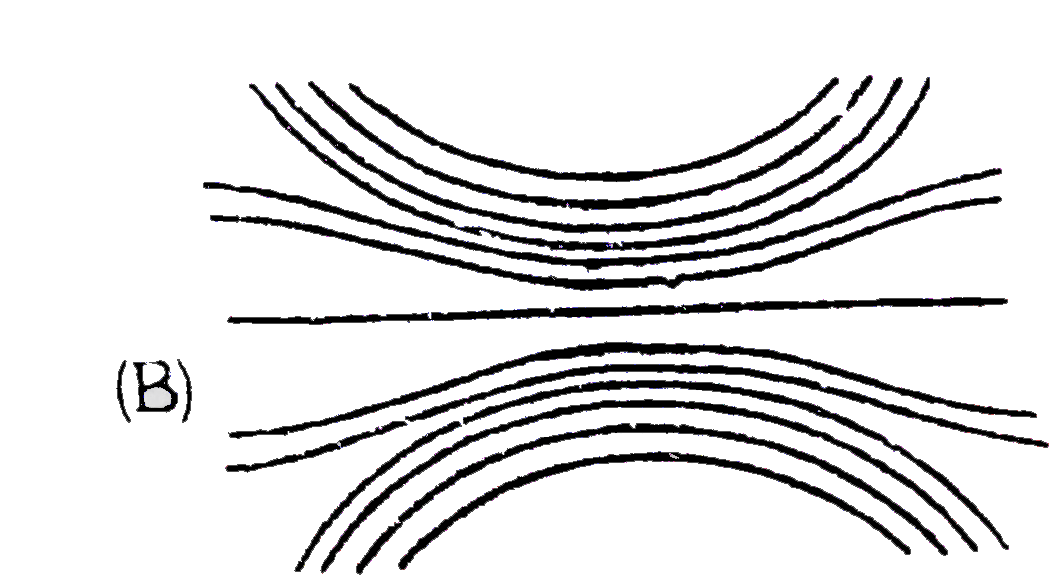Electric Field lines
always form a closed loop
are superimposed
can penetrate through conducting surface
emerges from negative charge
The correct Answer is:B
Electric field lines follows superposition principal.
Topper's Solved these Questions
- SAMPLE PAPER - 8BOOK - EDUCART PUBLICATIONCHAPTER - SAMPLE PAPER - 8EXERCISE - Section B
24 Videos
- SAMPLE PAPER - 8BOOK - EDUCART PUBLICATIONCHAPTER - SAMPLE PAPER - 8EXERCISE - Section C
6 Videos
- CBSE TERM-1 SAMPLE PAPER 1BOOK - EDUCART PUBLICATIONCHAPTER - CBSE TERM-1 SAMPLE PAPER 1EXERCISE - SECTION-C
6 Videos
- SAMPLE PAPER 04 (SOLVED)BOOK - EDUCART PUBLICATIONCHAPTER - SAMPLE PAPER 04 (SOLVED)EXERCISE - SECTION-C
6 Videos
Similar Questions
Previous Year Questions |Coulomb's Law|Coulomb's Law Vector From|Superposition Principle|Electric Field Intensity|Electric Field Lines|EFL Due To Equal & Like Charges|EFL Due To Equal & Unlike Charges|Properties Of Electric Field Lines|Meet Your Teacher
View SolutionAnswer question on the basis of your understanding of the following paragraph and the related studied concepts.
Eletric field around a single charges or a charges configuration can be pictorially mapped by drawing electric field lines in space. An electric field line is, in general, a curve drawn in such a way that the tangent to it at each point is in the direction of the net. field point. An arrow on the curve is obviously necessary to specify the direction of electric field from the two possible directions indicated by a tangent to the curve. A field line is a space curve i.e., a curve in three dimensions.
Electric field lines may be taken to be continous curve without any breaks. Relative density (i.e. closeness) of the field lines at different points indicate the relative strength of electric field at those points. The field lines crowd where the field is strong and are spaced apart where it is weak.
Draw electric field lines due to an electric dipole and mark their directions.
View Solution
Knowledge Check
In the following question a statement of assertion (A) is followed by a statement of reason (R )
A : An equipotential surface is normal to electric field lines.
R : Potential increases in direction of electric field .AIf both Assertion & Reason are true and the reason is the correct explanation of the assertion , then mark (1).BIf both Assertion & Reason are true but the reason is not correct explanation of the assertion then mark (2)CIf Assertion is true statement but Reason is false, then mark (3)DIf both Assertion and Reason are false statements , then mark (4).The diagram shows the electric field lines produced by an electrostalic focusing device.

Which one of the following diagrams best shows the corresponding equipotential lines? The electric field are shown as broken lines on each of the diagrams.A B
B C
C D
D
The electric and magnetic field lines differ in that
Aelectric line of force are closed curves while magnetic filed lines are notBmagnetic field lines are closed while electric lines are notCelectric field of force can give direction of the electric field while magnetic lines can notDmagnetic field while electirc lines can not.
Answer question on the basis of your understanding of the following paragraph and the related studied concepts.
Eletric field around a single charges or a charges configuration can be pictorially mapped by drawing electric field lines in space. An electric field line is, in general, a curve drawn in such a way that the tangent to it at each point is in the direction of the net. field point. An arrow on the curve is obviously necessary to specify the direction of electric field from the two possible directions indicated by a tangent to the curve. A field line is a space curve i.e., a curve in three dimensions.
Electric field lines may be taken to be continous curve without any breaks. Relative density (i.e. closeness) of the field lines at different points indicate the relative strength of electric field at those points. The field lines crowd where the field is strong and are spaced apart where it is weak.
What is an electric field line?
View SolutionArc Change Electric Field||Lines Change Electric Field|| Electric Field Due to Disc
View SolutionA charged particle free to move in an electric field always moves along the electric field line.
View SolutionElectric Field Due to Line|| Electric Flux
View SolutionElectric field and field lines due to conductor and electric pressure
View Solution
